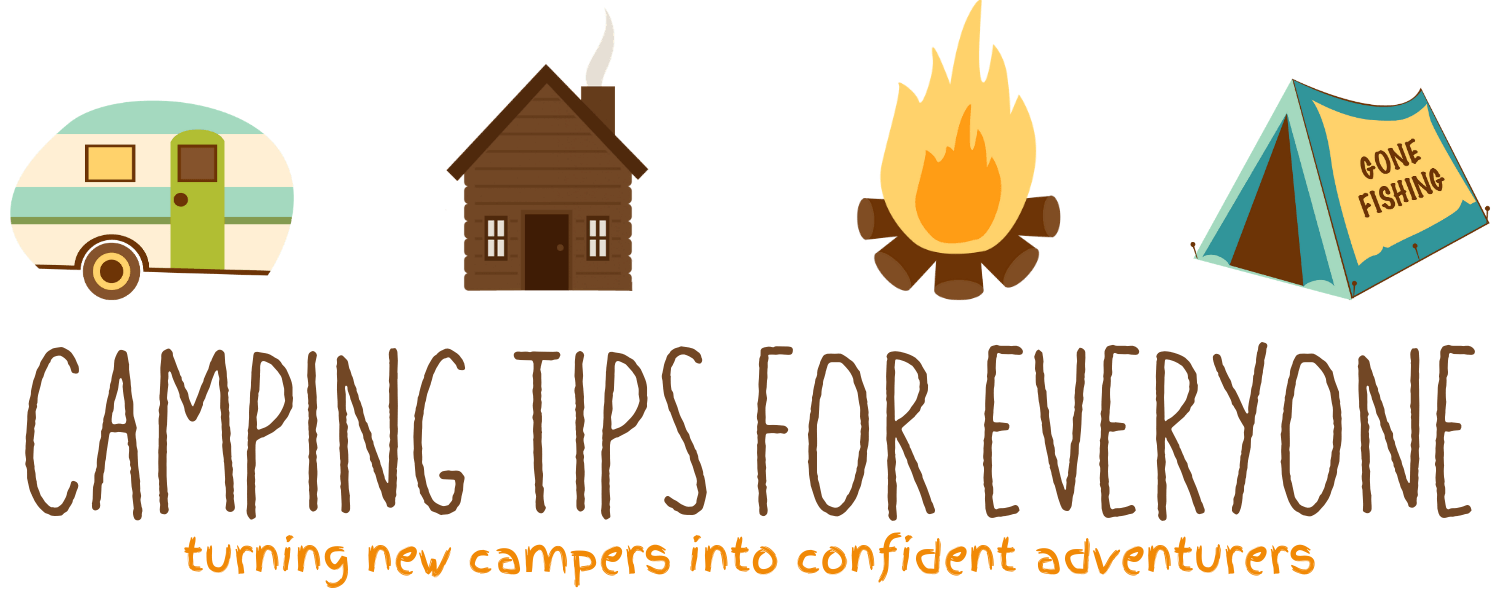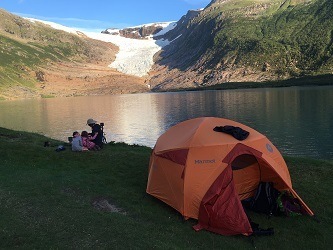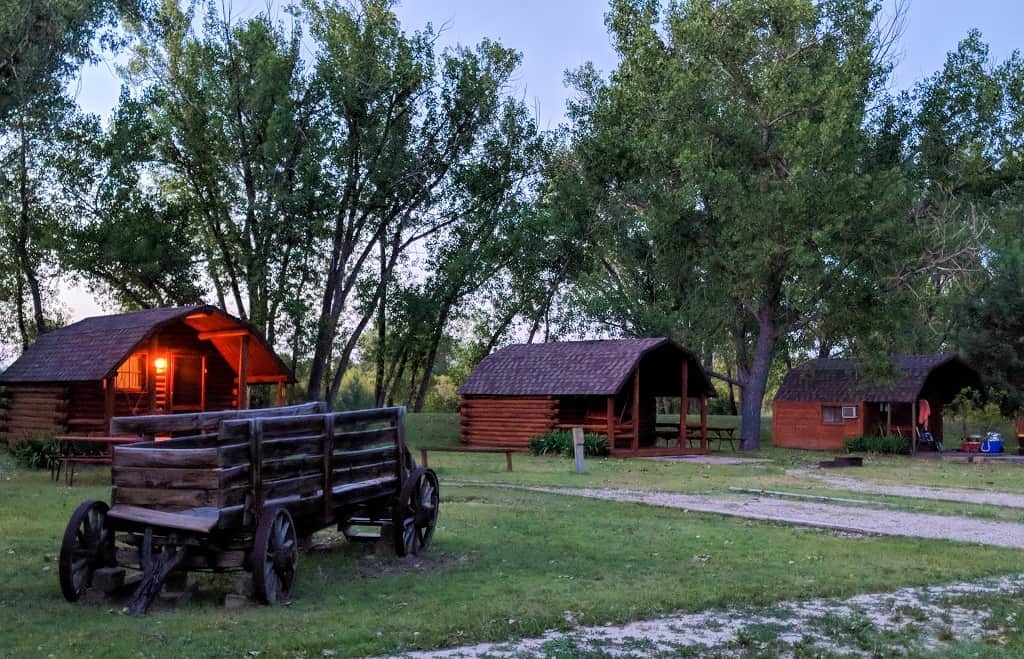Backcountry Camping 101: Tips for Beginners
Last Updated on May 29, 2019 by Jody
When it comes to camping, there truly is a style for everyone, from regal to rustic.
Many folks start out tent camping and upgrade to RV’s or cabins.
See our Tent Camping 101 tips!
But those of us who really want to ‘get away from it all’ take an opposite approach. This is where backcountry camping comes in.
Keep reading to find out what it is, and how to get started so you too can go “off the grid.”

What is Backcountry Camping?
Backcountry camping is defined as camping in the wilderness, or backcountry.
Backcountry campers pack in everything they need and camp far away from roads and towns.

A few ways that people can enjoy backcountry camping include:
- Backpacking or hiking
- Paddling by canoe, kayak or raft (think multi-day float trips
- Horse Packing
- Llama packing
- Cross-Country Skiing
How to Start Backcountry Camping
Like a lot of outdoor adventure hobbies, backpacking can be a costly endeavor, but that should not stop you from trying it out first.
If you’ve never done any kind of rustic camping, I recommend beginning with a guided trip, to see if it’s something you’d like to invest in.
There are plenty of resources and local groups, including the Sierra Club, Meetup groups, and even outfitters like REI, who offer overnight trips and equipment rental.
Is Backcountry Camping Safe?
There is a saying amongst backcountry enthusiasts that the most dangerous part of your trip is the drive to the trailhead.
It’s true; if you take the necessary precautions, backcountry camping can be very safe and enjoyable.
Weather and wildlife are the two main concerns, so read up on the area you are visiting and familiarize yourself with wilderness protocol.
Backcountry camping in bear country requires extra steps to ensure a clean camp that won’t attract bears. Always practice bear safety.
When it comes to weather, be sure to have an accurate forecast, and know what to do in case of lightning or flash floods, which are two of the most common dangers.
Backcountry Camping Packing List
Packing is by far the most daunting part of getting started in backcountry camping. But, if you’ve been tent camping, you’ve got a good start already!
A lot of your car camping gear can be repurposed for backcountry camping until you can replace it with lighter gear. I first backpacked with a five-pound car camping tent until I could afford the two-pound backpacking version.
Don’t let gear keep you from getting out! Beg, borrow, or rent until you can get your own backcountry gear.
If you are buying camping equipment specific for backcountry camping, you want to buy the lightest gear you can afford.

Here is a basic list of the items you will need to bring backcountry camping:
- Backpack (if you are backcountry hiking) or Dry Bags (if you are on a paddle or float trip)
- Tent
- Sleeping Pad
- Sleeping Bag
- Stuff Sacks – easy way to organize your gear inside your pack and in your tent
- Camp shoes – you’ll want to wear something besides hiking boots at the end of the day. (Crocs are great for this!)
- Camp Kitchen – stove, fuel, cooking pot, kettle to boil water, utensils
- Food – prepared food and easy to cook meals (Read our Backcountry Cooking 101 article!)
- Bear Vault or Food Storage (regional requirements vary, but you will need a way to keep critters out of your food)
- Water Treatment – you can use a filter or purification tablets, your choice may depend on the water quality of the destination
- Toilet Bag – mine includes TP, a trowel and hand sanitizer
- Toiletries – toothbrush and toothpaste, and anything else you need to survive overnight. For me, this includes contact lens solution, eyeglasses, and moisturizer.
You will also need your ten hiking essentials for backpacking trips:
- Map and compass
- Sunscreen and bug spray
- Insulating clothing
- Headlamp or flashlight
- First-Aid kit
- Fire starting kit
- Gear repair kit
- Nutrition
- Hydration pack to carry water
- Emergency shelter
Where Can I Buy Backcountry Gear?
There are some great resources for acquiring backcountry camping gear.
- REI is a popular option, thanks to their generous return policy and membership which nets up to a 10% dividend on purchases. Check out your local store for the quarterly garage sales, where used merchandise is sold at steep discounts.
- Backcountry.com is a great online option. They usually have seasonal sales at the same time as REI, so do a price comparison. I scored a ton of my backcountry camping gear from Steep & Cheap, their outlet site.
- Check your local hiking club or outfitter for gear swaps.
- Facebook and Craigslist – I have sold a lot of my gear this way when it was time for an upgrade.
Backcountry Trip Planning
Once you are ready to plan your own backcountry camping trip, there are a few things to keep in mind.
I find it’s best to join a pre-planned, organized trip before planning your own, so you can get the hang of it.

Some things to consider when planning a backcountry camping trip:
- Time of year – based on your equipment and personal preferences.
- Choosing a trail – there are many popular backpacking trails in every part of the United States. Backpacker Magazine and online forums are a great place to find out about trails.
- Loop, out and back, or shuttle? The best kind of trail is a loop trail, but they’re not as common. Other options include out and back, meaning you hike the same trail in both directions. Or, you can shuttle cars to each end of a hike. This adds some time before and after the trip but allows you to cover a longer distance. In some popular hiking areas, you can also hire a shuttle.
- Permits & Requirements. For popular trails, permits may be required and you may even need to reserve campsites ahead of time. Many trails restrict large groups, so even places that don’t need a permit may do so for large parties. Other destinations will simply ask you to sign in and sign out so they know who is in the area in case of an emergency.
- Bailout options. Always know your bailout options and the fastest way out of the backcountry in case of an emergency. A good map will help you find the nearest roads and towns if needed.
- Practice the seven principles of Leave No Trace. This is actually pretty simple, but a lot of people get this one wrong. Basically, you want to pack out what you pack in, and leave any campsite or trail looking better than how you found it.
- Depending on the destination, you may or may not be camping in predetermined campsites. Some popular places, like the Boundary Waters Canoe Area, have designated campsites and composting toilets. In other places, you will need to dig a cat-hole to do your business. You may even need to pack out your human waste in heavily trafficked areas.
Is Backcountry Camping Free?
Aside from purchasing equipment, it is possible to go backcountry camping for free.
Our National Forests are the best place for this, as they are much less restrictive than state parks or national parks.
In most cases, even when a fee is required, it’s generally nominal.
For example, the Grand Canyon charges $10 for a permit, plus $8 per person per night.
With backcountry camping, the largest expense will be your gear and getting to the trailhead.
And once you are in the backcountry, there’s no need for any money at all!

Backcountry camping is a great experience!
It’s such a feeling of accomplishment to be able to carry everything you need to survive overnight in the woods.
It’s also the best way to see some remote places that aren’t easily reached on a day hike.
You may get hooked and never go car camping again!
Will you- or have you- tried backcountry camping?
Save or share this article!








6 Comments